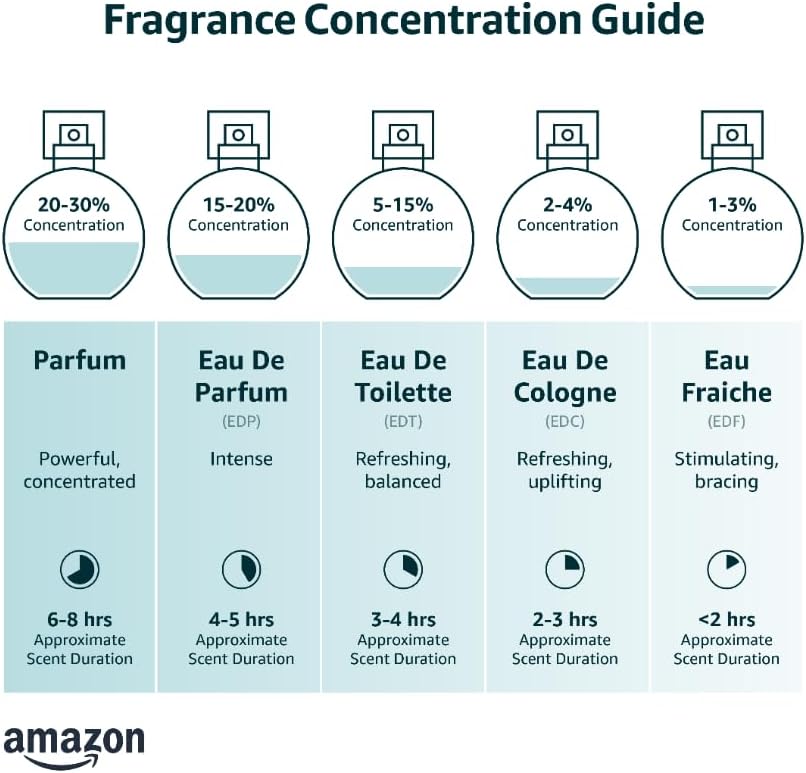Did you know that perfume can have over 100 ingredients? Yet, only a few are listed as fragrance notes. Learning how to read fragrance notes is key to understanding perfume artistry.
Perfume is like a layered story. It starts with bright citrus top notes and ends with deep vanilla base notes. This fragrance notes guide will help you understand these layers. So you can pick scents that match your style.
Understanding fragrance notes is for everyone. By learning about the top, middle, and base notes, you’ll see why scents smell different on the skin versus in the bottle. Our guide makes it easy to never guess again.
Key Takeaways
- Top notes vanish in minutes, but they’re the first impression of any scent.
- The fragrance pyramid organizes scents into three layers that evaporate at different rates.
- Base notes define a perfume’s longevity and its true character.
- Middle notes (heart notes) reveal a fragrance’s core personality.
- Knowing how to read fragrance notes helps match scents to your lifestyle and preferences.
Understanding the Basics of Fragrance Notes
Learning about perfume notes is all about how scents change over time. The pyramid structure of fragrance notes shows why a perfume smells different after hours. Let’s dive into the layers that make every scent unique.
What are Top, Middle, and Base Notes?
Every perfume has a scent pyramid. Here’s how it works:
- Top notes: The first scent you notice. Think of them as the “hello” of a fragrance. Citrusy bergamot or spicy pepper fade quickly, making room for deeper scents.
- Middle notes: The fragrance’s heart. Floral jasmine or woody cedar emerge within 10-30 minutes, showing the scent’s personality.
- Base notes: The scent’s lasting foundation. Vanilla or amber keep the fragrance on your skin, lasting hours. These notes are what you smell hours later.
Why Fragrance Notes Matter
“A fragrance’s notes are its story. Ignore them, and you risk a scent that doesn’t suit your style.”
Choosing a perfume without knowing its notes is like ordering a meal without tasting it. For example, Chanel No.5 has aldehydes (top), rose (middle), and vanilla (base) for a balanced scent. Knowing how notes work helps you find scents that fit your taste. It prevents scents from being too strong at the start or too weak at the end.
Remember: the top note fades, but the base stays. Pick base notes carefully—they’re what people notice most.
How to Read Fragrance Notes: A Step-by-Step Guide
Learning to read perfume scent notes is easy once you know where to start. Every fragrance description lists its ingredients in order. This order is from top to base notes. Let’s explore how it works:
- Spot top notes first. These are the bright, quick scents like citrus or herbs. They are the first thing you notice. For example, Chanel No. 5 starts with bergamot and orange blossom.
- Wait 10–15 minutes to find the middle notes. These are the heart of the fragrance, like rose or jasmine in Tom Ford’s Opium. They define the scent’s core.
- After an hour, base notes take over. Look for woods, musk, or vanilla. These are the foundation, as in Byredo’s Gypsy Water.
“A fragrance’s layers are like a story—the notes reveal themselves over time.”
When you read a fragrance breakdown, notice how brands mix different ingredients. For example, spicy top notes might turn into floral hearts and then settle into earthy bases. Always spray fragrances on your skin to see how they react with your body. This practice helps you guess how a scent will change throughout the day.
Decoding Perfume Ingredients
Learning fragrance terminology begins with knowing key ingredients and their roles. We’ll look at how citrus, florals, and woods create a scent’s story.
Common Perfume Components
Top notes start a fragrance, while base notes last the longest. Here’s a list of popular ingredients:
- Citrus: Bergamot (fresh), lemon (zesty)
- Florals: Rose (sweet), jasmine (aromatic)
- Woody: Sandalwood (warm), cedar (earthy)
- Spices: Cinnamon (pungent), vanilla (sweet)
Interpreting the Pyramid Structure
Perfumers use a pyramid to mix ingredients. This structure balances quick top notes with lasting bases. Let’s see it:
| Note | Ingredients | Duration |
|---|---|---|
| Top | Citrus, lavender | 15-30 minutes |
| Middle | Rose, geranium | 2-4 hours |
| Base | Oud, vanilla | 6+ hours |
“The olfactive pyramid ensures a fragrance evolves, much like a melody.” – Perfume Direct
Knowing this hierarchy helps in deciphering fragrance notes. For example, Chanel No.5 blends jasmine (middle) with vanilla (base) for depth. Start by finding your favorite notes and tracing them through the pyramid.
Mastering Fragrance Composition Breakdown
Visual tools like a fragrance notes chart make it easy to see how scents change over time. This chart shows the different layers of a fragrance, from top to base notes. It also tells us how long each lasts. Let’s dive into how to use these charts to decode fragrance notes well.
| Note Layer | Key Ingredients | Lasts |
|---|---|---|
| Top Notes | Bergamot, Citrus, Peppermint | 15-30 minutes |
| Middle Notes | Jasmine, Lavender, Rose | 2-4 hours |
| Base Notes | Sandalwood, Vanilla, Amber | 4+ hours |
Begin by finding the top notes—the first scents you notice. These fade fast but set the fragrance’s mood. Then, middle notes come in, blending with the top to form the scent’s heart. Lastly, base notes stay longer, leaving a lasting impression.
When decoding fragrance notes, think about the balance between layers. A good perfume moves smoothly, with each part enhancing the others. For instance, a citrus top note might go well with floral middle notes and a woody base. This balance makes for a cohesive scent journey.
Charts are great for comparing perfumes. They show how different notes work together. With practice, you’ll get better at choosing fragrances that match your style. Stay tuned for the next section, where we’ll explore how to apply this knowledge to everyday choices.
Interpreting Scent Notes for Everyday Wear
Choosing the right fragrance starts with a fragrance notes tutorial mindset. Whether you’re rushing to work or planning a weekend brunch, understanding fragrance notes 101 helps create a scent that feels purposeful. Here’s how to adapt your choices:
Seasonal Fragrances
Let the weather guide your picks:
- Summer: Light citrus or aquatic notes (e.g., Chanel Chance Eau Tendre)
- Winter: Warm spices or woods (e.g., Tom Ford Oud Wood)
- Spring/Fall: Floral or green accords (e.g., Bvlgari Omnia)
Matching Fragrances to Occasions
Align your scent with the moment:
| Occasion | Suggested Notes | Example |
|---|---|---|
| Work | Clean, subtle (almond, cashmere) | Byredo Grrr |
| Date Night | Velvet florals or vanilla | Jo Malone Red Roses |
| Casual Outings | Fruity or herbal blends | Le Labo Santal 33 |
Pairing scents with your routine builds confidence. Start small—spot a note you love, then layer it with your lifestyle. Your nose will thank you!
A Fragrance Notes Chart: Visual Guide and Tips
Visual tools like fragrance notes charts make it easier to explore master fragrance notes. They show how scents change, with top, middle, and base notes layered. Let’s dive into how to use them well.
Think of the chart as a timeline. Top notes are at the top, fade into the middle, then blend with base notes at the bottom. This layout helps you understand how interpreting perfume notes tells a fragrance’s story. Here’s how to use it:
- Start at the top: Spot citrus or fresh scents that first hit your nose.
- Track the middle layer: Notice floral or spicy notes that develop over an hour.
- Focus on the base: Identify warm, long-lasting accords like vanilla or oud.
“A well-designed chart turns abstract scent layers into a clear roadmap.”
Charts help you compare perfumes. Look for how notes transition—sudden changes or smooth blends. For example, a perfume labeled with “bergamot → jasmine → amber” shows a fresh start evolving into warmth. This helps in mastering fragrance notes by predicting how a scent will wear on your skin.
Remember: Charts are tools, not rules. Experiment by smelling a fragrance at different times. Pair this visual guide with real-life testing to interpret perfume notes that match your preferences. With practice, these charts become your shortcut to discovering perfumes that resonate with you.
Deciphering Fragrance Layers and Terminology
Exploring the science behind your favorite scents begins with fragrance note analysis. Let’s uncover the hidden mechanics behind every spray or roll-on.
Understanding Perfume Scent Notes
Every fragrance has its own story, told through scent layers. Start by smelling the top notes—like citrus or spices. Then, let the middle notes (florals or woods) come forward. Lastly, the base notes (vanilla or amber) stay longest.
Here’s how to break them down:
- Identify freshness: Sharp scents like bergamot signal top notes.
- Track the heart: This middle layer reveals the fragrance’s core identity.
- Spot the base: Earthy or sweet tones anchor the scent profile.
The Chemistry Behind Fragrances
Science turns raw ingredients into harmonious scents. When you apply perfume, its molecules react with your skin’s pH and temperature. For instance, understanding scent notes means knowing how jasmine might smell different on dry versus oily skin. 
The Role of Fixatives
Fixatives are the unsung heroes of fragrance. They’re sticky substances like labdanum or benzoin that keep scent molecules from evaporating too fast. Without them, your perfume would disappear in minutes, not hours. Think of them as the “glue” in fragrances like Chanel No. 5 or Tom Ford’s Oud Wood.
Fragrance Note Analysis for Personal Style
Discovering your signature scent begins with a perfume note breakdown. By decoding fragrance layers, you find out which scents match your personality. If you love floral freshness, try top notes like lily of the valley or citrus.
Dive into Sylvaine Delacourte’s guide to find scents that fit your lifestyle.
- Identify core preferences: Fresh florals, marine, or woody bases?
- Experiment with layering: Pair crisp top notes with warm base notes for complexity.
- Test on skin: How do decoding fragrance layers change when applied to your unique chemistry?
Start with scents like Sylvaine Delacourte’s Dovana (floral-woody) or Smeraldo (green marine). A personalized approach means choosing perfumes that reflect your style. This could be light fabrics or vibrant colors.
By analyzing how notes evolve, you create a scent that truly represents you.
Conclusion
Understanding fragrance notes opens a world of possibilities. You can find scents that truly speak to your personal style. By following our guide, you’ve learned how to decode top, middle, and base notes.
These notes work together in interpreting fragrance compositions. The fragrance note guide helps you pair scents with seasons, occasions, and your unique preferences.
Every perfume tells a story. Knowing how to decipher perfume ingredients helps you choose fragrances that resonate with your mood or event. Our visual tools and step-by-step advice make exploring new perfumes easy.
Start by identifying your favorite notes. Then, experiment with layering scents to build a collection that reflects your personality.
Remember, fragrance is a journey of self-expression. Use our tips to refine your choices. Revisit our resources as you discover new favorites.
Whether you’re shopping for a signature scent or gifting perfume, the knowledge from this guide ensures every purchase feels intentional. Keep exploring, trust your senses, and let your scent choices become an extension of who you are. Your next favorite fragrance is just a few notes away!









